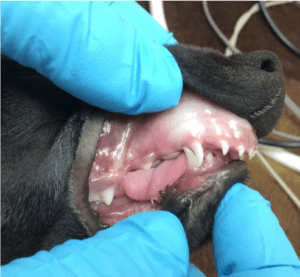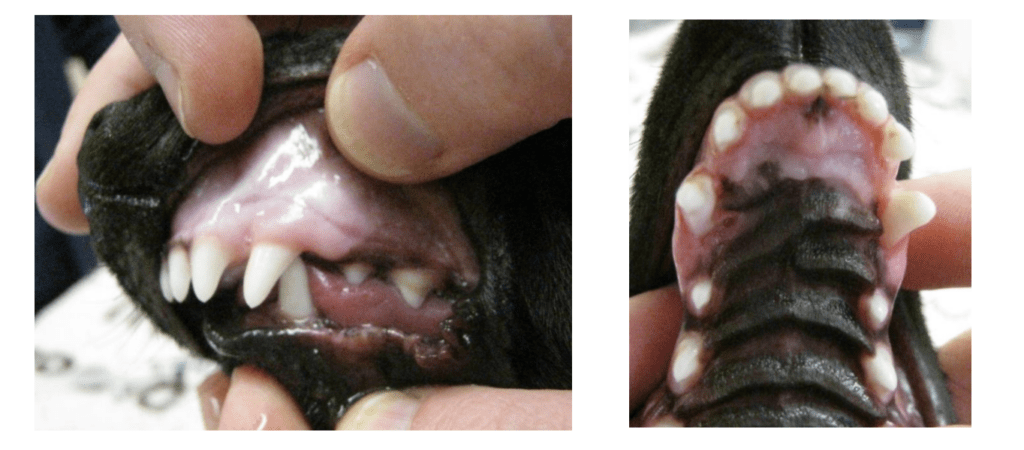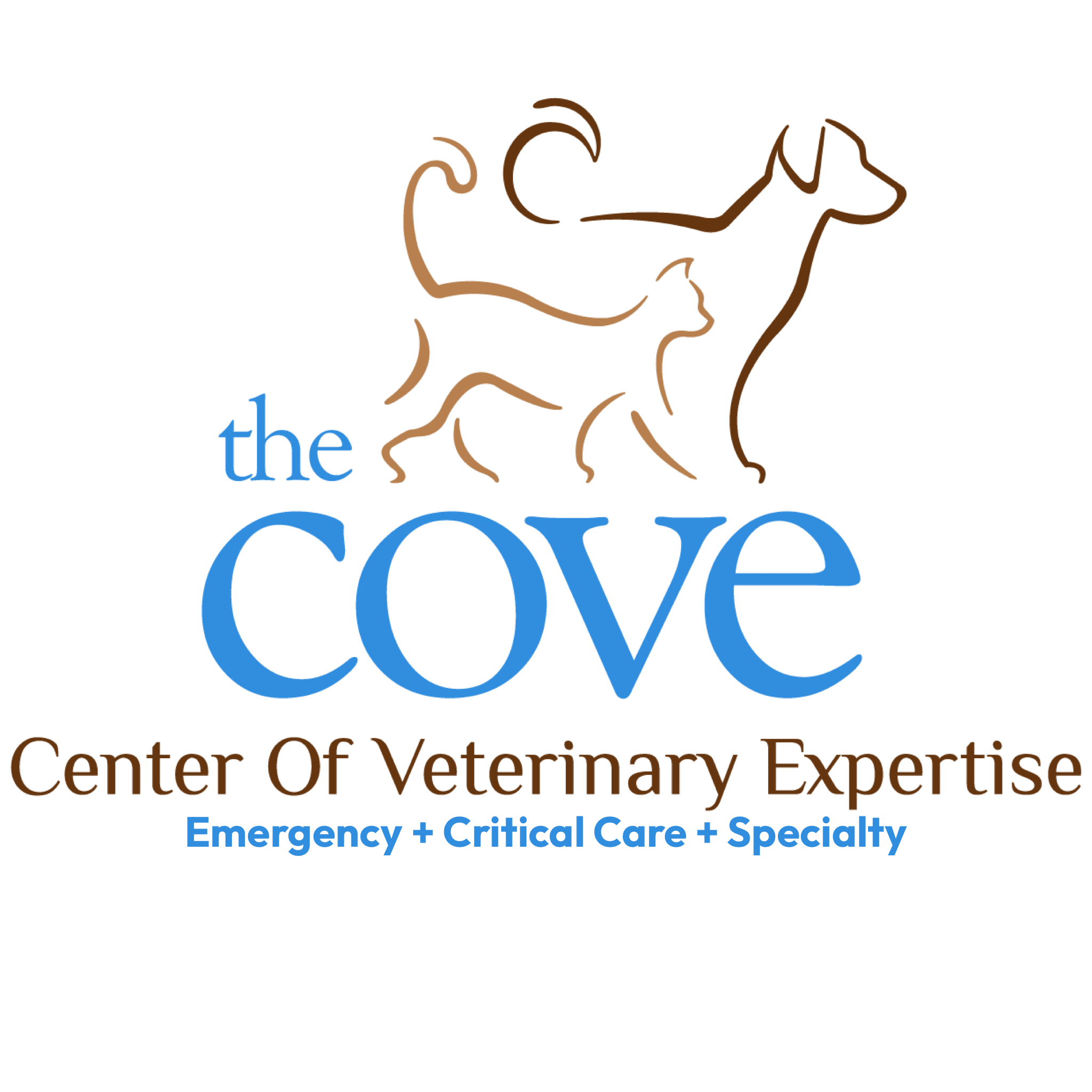Here at The COVE, we provide advanced oral care and surgery for dogs and cats that are referred to our dentistry department by their primary care veterinarian.
We often see pets who suffer from various dental injuries and illnesses. Class II malocclusions are a common reason for referral to The COVE’s dentistry department led by Colleen Fox, DVM, Practice Limited to Dentistry.
Malocclusion means misalignment. A Class II malocclusion is classified as the lower jaw (mandible) being too short in comparison with the upper jaw (maxilla). Our goal in these cases is to give our patients a comfortable and functional bite. Orthodontia (the movement of teeth) is not performed on show dogs or dogs that are intended for breeding. Ideally, malocclusions are addressed prior to adult teeth erupt, thus routine dental exams with your primary care veterinarian during puppy visits are strongly encouraged and necessary for accurate diagnosis and prompt attention.
Class II Malocclusion Pet Patient Case Study
Cami, a Dachshund, was referred to The COVE at 12 weeks old with a Class II malocclusion and slight linguoversion of the mandibular (lower jaw) canines. Linguoversion means that the canine teeth are abnormally angled towards the tongue. They are not in contact with the roof of the mouth but are causing defects in the gums around the upper canine teeth. Also, because the mandibular canine teeth are behind the maxillary canine teeth (which is not normally the case), the puppy’s own teeth are acting as a retainer and not allowing the lower jaw to grow.
The adult teeth are supposed to erupt on the inside of the deciduous (baby) teeth. This means, without any intervention, her adult canine teeth are going to erupt on the tongue side and will definitely be in contact with her hard palate. The best chance to avoid this was to extract her baby lower jaw canine teeth to give the adult canines room to erupt laterally so they do not hit the palate.
Cami’s Class II malocclusion was so pronounced that we didn’t expect her lower jaw to grow enough to make up for the length discrepancy; our only focus was to avoid trauma to her tissues from her upper jaw canine teeth and incisors.

Caption: Removal of Cami’s baby canines and incisors did relieve her pain but did not resolve the linguoversion of her adult upper jaw canine teeth (see pictures below).
Cami’s owner, Mrs. Chandler, was given the following options for therapy:
1.Crown shortening with vital pulpotomy
The teeth are surgically shortened, and a modified root canal procedure is performed. Repeat radiographs are required in six months to assess the viability of the treated teeth and some of these teeth will need a root canal in the future. The benefit of this procedure is that it allows us to maintain the normal root structure and much of the functionality of the canine teeth.
2. Surgical extractions
Extraction does not require long term follow up but carries a slight risk of opening of the surgical site, fractured roots or fractured mandible, and eliminates some of the structural integrity of the mandible.
In some cases, orthodontic appliances are also offered, but Cami’s mandibular canines were behind her maxillary canines so there would be nowhere to move the teeth with the other canines in the way. Since Mrs. Chandler elected to save Cami’s mandibular canine teeth, we had to wait until her adult canine teeth were almost fully erupted to pursue therapy. Her adult mandibular incisor teeth would also require extraction; therefore, the primary care veterinarian extracted them while Cami was under general anesthesia to be spayed.

Caption: Cami’s post-operative pictures. The left image shows Cami comfortably closing her mouth with no contact to the palate from her lower jaw (mandibular) canine teeth.
We are happy to report that Cami is doing well and is a happy and healthy puppy.
Is Your Pet in Need of Advanced Dental Care?
Dr. Fox is dedicated to educating pet owners about the importance of good oral health in a compassionate and calm manner. She accepts patients via referral from primary care veterinarians. Please call 757.935.9111 for more information or to schedule an appointment.
About Us
The COVE’s veterinarians and staff wholeheartedly embrace the core values of community, collaboration, commitment, compassion, and integrity. This focus ensures that pets, the people who love them, and their primary care veterinarians have as positive and affirming a healthcare experience as possible, regardless of the circumstances that bring us all together.
